Recent reports claim definitive proof that the 2019/20 Mekong drought was caused by China. But they do not provide that proof according to researchers at the Australia Mekong Partnership for Environmental Resources and Energy Systems (AMPERES). Will the controversial analysis further polarise stakeholders, or could the crisis shift regional cooperation into more productive spaces?
The Mekong is one of the world’s great rivers. At the centre of this system is the flood pulse – a seasonal cycling of water that sees flow in the Mekong swell in response to the monsoon transporting water, nutrients and sediments from the headwaters to the floodplains and delta. Most years the flood pulse sustains the basin’s high levels of productivity and biodiversity, but during extreme years, drought and flood can devastate basin communities.
The failure of the monsoon in 2019 and the drought conditions persisting to the present day have resulted in historic low river levels. The situation is so severe that Vietnam has declared a state of emergency in the Mekong delta and Thailand has called on the army to support drought relief efforts.
An assessment released in April by Eyes on Earth of water levels measured at Chiang Saen in northern Thailand has attempted to shed light on what is happening in the basin of the Lancang River (China’s name for its stretch of the Mekong). Then, a commentary by the Stimson Center shortly after claimed the Eyes on Earth study is definitive proof that Chinese water management policy caused the drought.
These bold assertions speak to long-held suspicions regarding China’s growing influence on lower Mekong flows, suspicions fuelled by a lack of transparency surrounding China’s upstream activity. The problem is that the new study is not definitive, and the conclusions go beyond what the evidence suggests.
Nonetheless, the findings and subsequent commentary have been widely distributed and generated significant attention in the media. The reporting has triggered a wave of much-needed public debate on the causes of worsening seasonal water scarcity in the basin.
But there remain questions surrounding the technical analysis itself and the extent to which it supports claims about Chinese water-management policy. It raises broader questions related to the use and misuse of data in the river basin and the implications for regional cooperation.
Review of the Eyes on Earth study
The Eyes on Earth study uses satellite data to provide information on flow in the Lancang River. The analysis uses microwave imager data to develop a “wetness index”, which estimates the amount of water in the river catchment. Statistical analysis is then used to establish a relationship between the “wetness” of the catchment and monthly water levels at Chiang Saen station.

Concerns regarding the study have been expressed, including by the Mekong River Commission Secretariat (MRCS), academics, as well as by us at AMPERES.
First, a simple regression model may not adequately capture the complex hydrological processes (eg groundwater dynamics) of the Lancang River. Second, the use of water level data alone does not give understanding of the water volumes flowing in the river or water volumes stored and released by the reservoirs.
Third, the study also discusses water level and flow volumes interchangeably, though they are different. Fourth, monthly water level data is too coarse to reflect hydropower operations occurring over much shorter timescales. Fifth, water flows in the Mekong are highly variable, and the baseline used in the study is too short to allow the reliable identification of a relationship between water levels in the river and wetness in the upstream catchment.
Finally, the study makes almost no reference to peer-reviewed literature on the Mekong system from the past 15-20 years, nor any evidence of the study having undergone a peer-review process – two critical safeguards in the scientific process.
The study by Eyes on Earth does not provide definitive proof of China’s responsibility, but it does represent a novel illustration of the potential for satellite imaging technology to transcend national boundaries and independently reveal hydrological conditions in the basin. Further research is required to develop and realise this potential.
Review of the Stimson Center reporting
Despite these concerns, the main technical findings of the Eyes on Earth study are however consistent with the prevailing scientific understanding. For example, the study concurs that flow at Chiang Saen began to diverge from natural conditions in 2012 when the Nouzhadu dam in China’s Yunnan province started filling. Dr Alan Basist, the main author of the study, also confirmed during a live stream that the low flows in the lower Mekong were largely caused by drought in the lower part of the basin outside China, but these were exacerbated by the control exerted by the Lancang dams.
With broad areas of consistency between the Eyes on Earth study findings and the prevailing scientific understanding, why did the study generate so much controversy?
The answer lies in how the study has been used as evidence for a simplified narrative that blames China for the drought. With the Eyes on Earth study in hand, the Stimson Center claims that drought in the lower Mekong was the direct result of Chinese water management policy; that China is hoarding water.
The Stimson Center also claims that China’s position on Mekong water is “not one drop of China’s water resource should be shared without China using it first or without making those downstream pay for it”, and that China’s claim to solidarity with downstream neighbours is false.
The think-tank concluded that although the Lancang catchment received an above-average amount of rain and snowmelt, nearly all the water remained trapped behind China’s dams. This contradicts earlier research. Indeed, our calculations suggest that the whole cascade of 11 dams could only store around 35-37% of wet season flow in an average year, even less during a year with above-average water availability.

The political conclusions drawn and widely disseminated by the Stimson Center are not substantiated by the Eyes on Earth study. These claims represent a politicisation of data. One that risks undermining the integrity of efforts by a community of researchers to build, over decades, a credible evidence base on the functioning of the Mekong system.
Drought déjà vu
While the data sparking the 2019/20 controversy is new, the pattern of severe droughts in the basin resulting in controversy is not. Droughts in 2010 and 2016, and their relationship to the role of hydropower, were also the cause of political controversy in the basin. The pattern has been that a major water-scarcity crisis devastates local communities, and protests and concerns bubble up causing lower Mekong countries to demand more transparency from China on its activities upstream.
China is stung by the criticism, and in an attempt to defuse the situation releases limited data regarding the hydropower operations in Yunnan province. But the data is insufficient to be conclusive, and for governments and civil society in the lower Mekong there remains ambiguity as to the role of the Lancang cascade on downstream flow variability. As the drought conditions abate so too does the impetus to pursue regional cooperation, until the next crisis.
Data becomes central to the negotiation between multiple actors who share the same water resource but have different interests, values and priorities. It also leaves data open to distortion or suppression. The misuse of data can typically be traced back to an effort to control the outcome of decision-making processes, to obscure the impact of investment projects, planning and policy, and constrain debate.
The claims in the Stimson article are an over-interpretation of available evidence. Conclusions have been drawn beyond what the data can actually tell us. But such use of evidence has been a common phenomenon in the debate surrounding the Mekong.
For example, 10 years ago, amid concerns that lower Mekong dams would cause a collapse in the Mekong fishery, private sector developers regularly used research on North American fish passages built for salmon species as evidence that fish “ladders” would be successful for the hundreds of varied migratory species of the Mekong.
Data is often withheld to obscure system understanding and undermine the discussion of transboundary issues in the Mekong system. China’s long-standing reluctance to fully share data with downstream countries is a prime example of this type of misuse. But this too is a practice all too familiar in the basin. For example, in the early 2000s Vietnam was reluctant to share information on releases from the Sesan cascade with big impacts on downstream Cambodian communities.
The motivations for misuse
Such selective use or distortion of data represents efforts from actors on all sides to influence the debate and align outcomes with their own interests. Incidences of water scarcity offer strategic opportunities for stakeholders to use data to escalate or de-escalate the issue in an attempt to achieve their political ends.
Framing flow alterations as an existential threat to downstream countries serves to escalate the issue and allows its interpretation as a crisis, in which the use of emergency measures is legitimate. Drought and water insecurity become a threat to sovereignty, to diplomatic relations, to political stability nationally and in the affected communities. The Stimson Center’s treatment of hydrological conditions in the 2019/20 drought represent such an attempt to escalate the problem.
Conversely, efforts to placate the downstream states and de-escalate flow alterations attempt to prevent the treatment of the issue as a threat to security or stability and place it back within the realm of “normal politics”. In 2010, China’s release of data on dry season water levels in its upstream reservoirs in the days preceding a Mekong River Commission summit could be viewed as a proactive effort to prevent the public escalation of the issue.
For communities and governments of the lower Mekong, this is a familiar bind. On one side actors escalate the issue to try and force ameliorative action. On the other some seek to mute and de-escalate so that business as usual may continue unperturbed. Data is either absent or caught in-between.
This was the case in the previous droughts, such as 2010. Once drought conditions passed, so too did the political imperative to act, and there was no appreciable improvement in regional cooperation to better manage water scarce conditions.
What is the alternative?
Today the Mekong and the seasonal ebb and flow of its flood pulse stands at the centre of the trade-offs associated with basin development. When in the past it signalled the change in seasons, it now conveys the transboundary implications of national development decisions.
Key processes that underpin the functioning of the system such as the seasonal rise and fall of the Mekong, the flow reversal of the Tonle Sap River, the transportation of sediments and nutrients from the headwaters to the floodplains and deltas, and the migratory corridor for fish and other aquatic species are all under threat as human interventions regulate, fragment and extirpate connections.
We propose learning from arguably the most successful human effort to build an evidence base for policy response – the IPCC
Hydropower, rightly, is at the forefront of the debate. At the same time, other development pressures including the expansion of irrigation and drainage, urbanisation, large-scale infrastructure development and deforestation are accelerating. Climate change is also bringing with it uncertain and unpredictable changes to the hydrology of the basin. As the scale of change forced on the Mekong system has grown, so too have the impacts. Today the Mekong basin is facing unprecedented change, from droughts and floods to a sinking delta, weakened flow reversal in the Tonle Sap and a collapse in the inland capture fishery.
Data has provided an instrumental contribution to understand the scale and seriousness of these challenges. But as the current controversy surrounding the 2019–20 low flows shows, how we generate, utilise and interpret data matters.
We see five principles of data production and management as essential to maintain the integrity of the Mekong evidence base: transparency, open access, peer-review, impartiality and, importantly, a separation of data production from political deliberation.
Data and evidence must shift focus to address the broader sustainability issues associated with large development decisions and their cumulative impacts. As has been repeatedly called for by civil society, there is a need for an inclusive and open process of deliberation.
We propose learning from arguably the most successful human effort to build an evidence base for policy response – the Intergovernmental Panel on Climate Change (IPCC). The IPCC represents one of the most wide-reaching and successful efforts to apply the scientific method to bring the environment and sustainability into planning and policy-making processes.
Its success has been in convening the peer-review of many independent scientific studies and their synthesis into a cohesive, integrated understanding of climate change and its impacts. This process-based approach of consensus building has not only contributed to significant advances in the science and understanding of climate change, but has also led to the robust coupling of science to policy.
For the Mekong, an IPCC-style inquiry would require mandate and oversight from all Mekong governments, a platform for meaningful civil society engagement and an independent process for scientific assessment. There must be integrity in the science, accountability to the people of the basin and real cooperation between governments for it to be successful. Such a structure would provide a process from which an understanding of the drivers and options for effective management of the Mekong could be explored.
However, an IPCC-style science-to-policy process need not start from scratch. In April 2020, Thailand called for a joint study between riparian states to study the drought issue. If that study was led by riparian governments, with meaningful entry points for civil society into the design and review of policy options, and supported by an independent, transparent scientific process, it could form a prototype for a much more productive relationship between science, deliberation and policy.
The drought of 2019–20, like the ones before, provides a sense of urgency and could galvanise a coherent and coordinated response.
The question is: can we start a process of robust and transparent investigation into these issues which will generate momentum that continues beyond the limits of the immediate crisis? Or will we again slide into a cycle of crisis-driven escalation and de-escalation, where the severity of water crises continues to escalate while cooperation stagnates?
This article was originally published by Southeast Asia Globe.
Australia-Mekong Partnership for Environmental Resources and Energy Systems (AMPERES) is a company focused on catalysing integrated and equitable solutions to the entrenched development problems of the Mekong region. It has offices in Australia and Vietnam, partners in every Mekong country and experience working on water and energy governance since the mid-2000s.
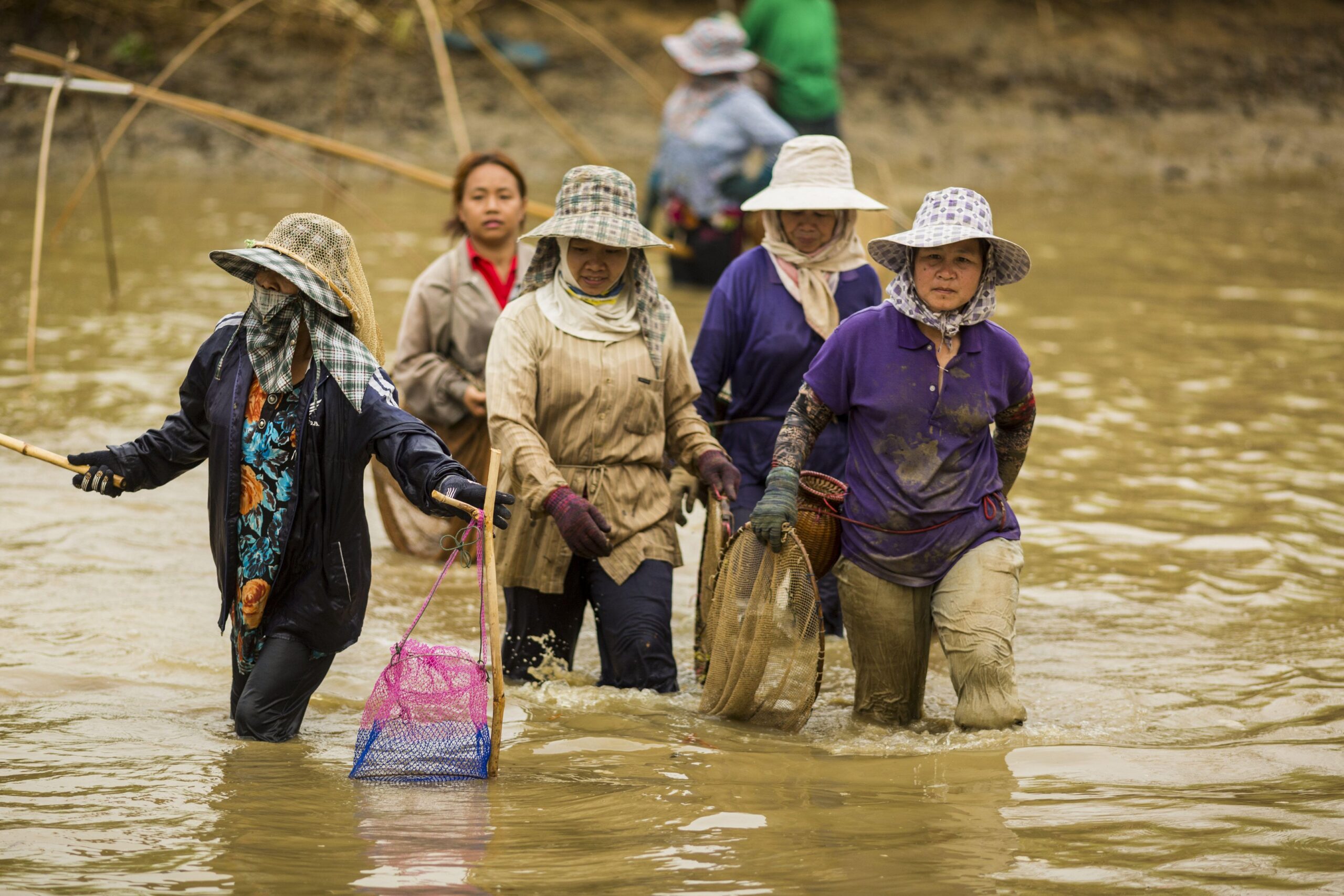
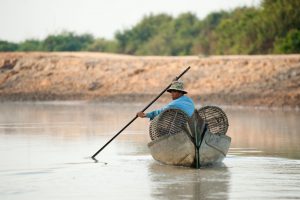
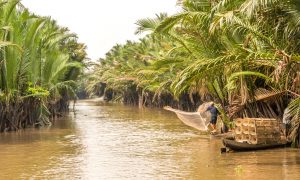

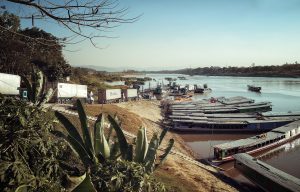
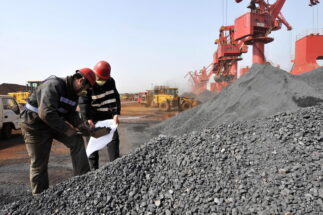
![There could be more muddy rain in the future, scientists say, as climate change makes wind patterns more erratic and unpredictable [Kathmandu image by: Alamy]](https://dialogue.earth/content/uploads/2020/06/Kathmandu-300x200.jpg)

